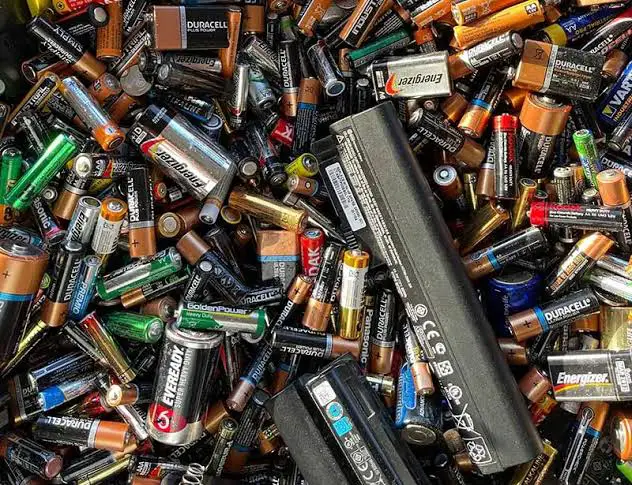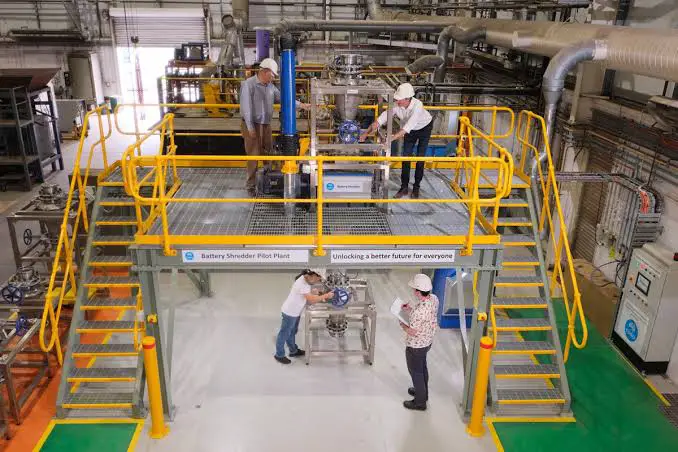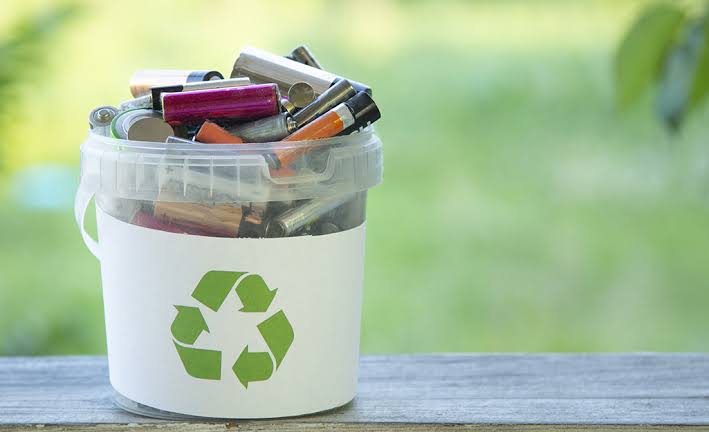Practical Steps to Convert Batteries Wastes into New Batteries; Batteries wastes can be changed into new batteries, which is very good because it helps the environment and saves resources. When people use batteries, they run out of power. Instead of throwing them away, we can recycle them. This means we take the old batteries and make them into new ones.
First, we collect all the old batteries. They come from many places like homes, businesses, and schools. Then, we take them to a special place called a recycling center. At the recycling center, they have machines that can break down the old batteries into smaller pieces.
After the batteries are broken down, the different materials inside can be separated. These materials include metals like lithium, cobalt, and nickel. These metals are important because they can be used to make new batteries.
Once the metals are separated, they can be cleaned and processed. This means they are made ready to be used again. Then, they can be sent to a factory where new batteries are made.
At the factory, the cleaned metals are mixed together with other materials. These materials help to make the batteries strong and long-lasting. Then, the mixture is put into a mold and shaped into a battery. After the batteries are formed, they are tested to make sure they work properly. If they pass the test, they are ready to be used again. These new batteries can be used in many things like cars, toys, and electronics.
By recycling batteries wastes, we can help to reduce pollution and save energy. It also helps to keep harmful chemicals out of the environment. So, the next time you have old batteries, remember to recycle them. It’s good for the planet and good for everyone.
Read Also: How to Convert Electronics (E-waste) Wastes into Precious Metals Extraction
Types of Recyclable Batteries Wastes and their Uses

There are different types of batteries wastes that can be recycled to create new batteries and other useful products. Here are some common types and their uses:
1. Alkaline Batteries: These are the most common type of household batteries. They can be recycled to recover metals like zinc and manganese. These metals can be used to make new batteries, stainless steel, and other metal products.
2. Lithium-ion Batteries: These batteries are often used in electronics like smartphones, laptops, and electric vehicles. They contain valuable materials like lithium, cobalt, and nickel. Recycled lithium-ion batteries can be used to make new batteries, as well as to produce alloys for metal manufacturing.
3. Lead-acid Batteries: These batteries are commonly found in vehicles, uninterruptible power supplies (UPS), and backup power systems. They contain lead, which is a toxic metal, but it can be recycled safely. Recycled lead from these batteries can be used to make new batteries, lead alloys for construction materials, and other lead-based products.
4. Nickel-metal Hydride (NiMH) Batteries: NiMH batteries are used in many rechargeable electronic devices like cameras, power tools, and hybrid vehicles. They contain metals like nickel, cobalt, and rare earth elements. These metals can be recovered through recycling and used to manufacture new batteries or other electronic components.
5. Button Cell Batteries: These small, round batteries are often used in watches, calculators, and hearing aids. They contain materials like zinc, mercury, and silver. Recycling button cell batteries can recover these valuable metals for reuse in new batteries or other applications.
Overall, recycling batteries wastes helps to conserve valuable resources, reduce the environmental impact of battery production, and minimize the amount of hazardous materials sent to landfills. It’s important to properly dispose of batteries and take them to designated recycling centers to ensure they are recycled safely and efficiently.
How to Convert Batteries Wastes into New Batteries

Converting batteries wastes into new batteries involves several steps to recover valuable materials and manufacture them into usable battery components. Here’s a simplified explanation of the process:
1. Collection: The first step is to collect used batteries from various sources, such as households, businesses, and recycling centers. It’s essential to ensure proper collection methods to gather as many batteries as possible for recycling.
2. Sorting and Segregation: Once collected, batteries are sorted into different types based on their chemistry, such as alkaline, lithium-ion, lead-acid, etc. This sorting helps in the subsequent recycling process by separating batteries with similar compositions.
3. Breaking Down: Next, the batteries are broken down into smaller pieces through mechanical shredding or crushing. This process helps expose the internal components of the batteries, including metals, electrolytes, and casings.
4. Material Separation: After breaking down, the components of the batteries are separated into their respective materials. This typically involves techniques such as sieving, magnetic separation, and flotation to isolate metals like lithium, cobalt, nickel, lead, and others.
5. Purification: Once separated, the recovered metals undergo purification to remove impurities and contaminants. This purification process ensures that the recycled materials meet the required quality standards for use in new batteries.
6. Manufacturing: The purified metals are then processed and transformed into battery components. This may involve alloying, refining, and shaping the materials into electrodes, electrolytes, and casings suitable for battery production.
7. Assembly: In the final step, the battery components are assembled into new batteries. This includes combining the electrodes, electrolytes, and casings in the correct configuration to create functional batteries.
8. Testing: Before distribution, the newly assembled batteries undergo rigorous testing to ensure they meet performance and safety standards. This includes checking parameters such as capacity, voltage, and cycle life to verify the quality of the batteries.
9. Packaging and Distribution: Once tested, the new batteries are packaged and prepared for distribution to consumers, industries, and electronic manufacturers. Proper labeling and handling instructions are provided to ensure safe usage and disposal of the batteries.
By following these steps, batteries wastes can be effectively converted into new batteries, reducing the need for virgin materials and minimizing environmental impacts associated with battery production and disposal. Recycling batteries not only conserves valuable resources but also helps mitigate pollution and waste accumulation in landfills.
The Benefits of Converting Batteries Wastes into New Batteries
Converting batteries wastes into new batteries offers numerous benefits for the environment, society, and the economy. Here are some key advantages:
1. Resource Conservation: Recycling batteries allows for the recovery of valuable metals and materials such as lithium, cobalt, nickel, and lead. By reusing these resources, we reduce the need for extracting and processing virgin materials, conserving natural resources and reducing environmental degradation associated with mining and extraction.
2. Energy Savings: Manufacturing new batteries from recycled materials typically requires less energy compared to producing batteries from raw materials. This energy savings helps reduce greenhouse gas emissions and mitigates the environmental impact of battery production, contributing to efforts to combat climate change.
3. Waste Reduction: Recycling batteries helps divert hazardous materials from landfills and incinerators, where they can leach toxic substances into the soil, water, and air. By keeping batteries out of the waste stream, we reduce pollution and protect ecosystems and human health.
4. Economic Opportunities: Battery recycling creates jobs and economic opportunities in the recycling industry, including collection, sorting, processing, and manufacturing. It also fosters innovation in recycling technologies and encourages investment in sustainable practices, driving economic growth and prosperity.
5. Closed-loop Systems: Converting batteries wastes into new batteries promotes the development of closed-loop systems, where materials are continuously recycled and reused in a circular economy model. This reduces reliance on finite resources, enhances resource efficiency, and promotes long-term sustainability.
6. Environmental Protection: Properly recycling batteries helps prevent the release of hazardous substances such as mercury, cadmium, and lead into the environment. These toxic materials can pose significant risks to ecosystems, wildlife, and human health, making battery recycling essential for environmental protection and pollution prevention.
7. Regulatory Compliance: Many countries and regions have regulations and laws mandating the recycling and proper disposal of batteries to minimize environmental impact and ensure public safety. By complying with these regulations, businesses and individuals contribute to a cleaner, healthier environment and avoid potential fines and penalties.
Overall, converting batteries wastes into new batteries offers a multitude of benefits, ranging from resource conservation and energy savings to waste reduction and environmental protection. By embracing recycling practices and supporting sustainable initiatives, we can create a more resilient and environmentally responsible future for generations to come.
Read Also: How to Convert Electronics (E-waste) Wastes into New Electronic Components
The Uses and Benefits of Recycled New Batteries

Recycled new batteries, made from reclaimed materials through the recycling process, offer various uses and benefits across different sectors. Here are some of their key applications and advantages:
1. Energy Storage: Recycled new batteries are widely used for energy storage in renewable energy systems, such as solar and wind power installations. These batteries store excess energy generated during peak production periods and release it during times of high demand or when renewable sources are not available, helping to stabilize the grid and support the transition to clean energy.
2. Electric Vehicles (EVs): Recycled new batteries play a crucial role in powering electric vehicles, providing the energy storage needed for propulsion. By using recycled materials, EV manufacturers reduce the environmental impact of battery production and contribute to the sustainability of transportation systems by reducing greenhouse gas emissions and dependence on fossil fuels.
3. Portable Electronics: Recycled new batteries are utilized in a wide range of portable electronic devices, including smartphones, laptops, tablets, and wearable technology. These batteries offer reliable and long-lasting power for everyday use, enabling seamless communication, productivity, and entertainment while minimizing the environmental footprint associated with electronic waste.
4. Grid Stability: Recycled new batteries are deployed in grid-scale energy storage projects to enhance grid stability, reliability, and resilience. These large-scale battery systems provide backup power during outages, support peak shaving to reduce electricity costs, and enable the integration of renewable energy sources into the grid, facilitating a more flexible and sustainable energy infrastructure.
5. Emergency Backup Power: Recycled new batteries serve as essential backup power sources for critical infrastructure, emergency services, and disaster response efforts. These batteries provide reliable power during emergencies, ensuring continuity of essential services, communication networks, and lifesaving medical equipment in times of crisis.
6. Off-grid Applications: Recycled new batteries are used in off-grid and remote locations where access to reliable electricity is limited or unavailable. These batteries support off-grid solar systems, remote telecommunications towers, rural electrification projects, and off-grid residences, providing clean and sustainable energy solutions for underserved communities.
7. Environmental Benefits: Using recycled materials in new batteries reduces the need for virgin resource extraction, conserves natural resources, and minimizes energy consumption and greenhouse gas emissions associated with battery production. By extending the lifecycle of materials through recycling, recycled new batteries contribute to a more circular economy and reduce waste generation and pollution.
Overall, recycled new batteries offer versatile and sustainable solutions for energy storage, transportation, and power generation, contributing to a cleaner, more resilient, and environmentally friendly future. By promoting battery recycling and supporting the adoption of recycled new batteries, we can accelerate the transition to a more sustainable energy ecosystem while minimizing environmental impacts and maximizing resource efficiency.
The Challenges of Converting Batteries Wastes into New Batteries and their Solutions
Converting batteries wastes into new batteries presents several challenges, ranging from technological limitations to environmental and economic factors. Here are some of the key challenges and potential solutions:
1. Complexity of Battery Chemistry: Different types of batteries have varying chemistries and compositions, making it challenging to develop efficient recycling processes that can handle diverse materials.
Solution: Research and innovation in battery recycling technologies can help develop versatile and adaptable processes capable of handling various battery chemistries. Advanced sorting and separation techniques, such as hydrometallurgical and pyrometallurgical methods, can improve the recovery of valuable materials from mixed battery wastes.
2. Safety and Environmental Concerns: Batteries contain hazardous materials, including heavy metals and toxic chemicals, which can pose risks to human health and the environment if not handled properly during recycling.
Solution: Implementing stringent safety protocols and environmental regulations for battery recycling facilities can minimize exposure to hazardous substances and prevent pollution. Investing in advanced pollution control technologies, such as scrubbers and filtration systems, can help mitigate emissions and protect workers and surrounding communities.
3. Economic Viability: Battery recycling processes often require significant investment in infrastructure, equipment, and research and development, which may pose economic challenges for recycling facilities and operators.
Solution: Governments, industries, and stakeholders can incentivize battery recycling through financial incentives, grants, tax credits, and subsidies. Establishing extended producer responsibility (EPR) programs, where manufacturers bear the responsibility for managing and recycling batteries at the end of their life, can create a more sustainable funding model for recycling initiatives.
4. Lack of Collection Infrastructure: Limited access to collection points and recycling facilities can hinder the efficient collection and recycling of batteries wastes, especially in rural and underserved areas.
Solution: Expand and improve collection infrastructure by establishing more collection points, drop-off locations, and recycling centers in communities, businesses, and public facilities. Implement public education and awareness campaigns to promote battery recycling and encourage participation among consumers and businesses.
5. Technological Limitations: Existing battery recycling technologies may have limitations in terms of efficiency, scalability, and recovery rates, particularly for emerging battery chemistries and advanced materials.
Solution: Foster research and development in battery recycling technologies to overcome technical barriers and improve process efficiency, recovery rates, and material purity. Collaborate with academic institutions, research organizations, and industry partners to accelerate innovation and technology transfer in battery recycling.
Implementing comprehensive solutions that prioritize environmental protection, resource conservation, and economic viability will be essential to unlocking the full potential of battery recycling and realizing the benefits of a cleaner, greener future.
Frequently Asked Questions (FAQs) About How to Convert Batteries Wastes into New Batteries
Q1: Why is it important to convert batteries wastes into new batteries?
Converting batteries wastes into new batteries helps conserve valuable resources, reduce environmental pollution, and minimize the need for raw materials extraction. It also contributes to energy savings and supports sustainable manufacturing practices.
Q2: What types of batteries can be recycled to make new batteries?
Various types of batteries, including alkaline, lithium-ion, lead-acid, nickel-metal hydride (NiMH), and button cell batteries, can be recycled to recover valuable metals and materials for use in new batteries.
Q3: How are batteries wastes collected for recycling?
Batteries wastes can be collected through various channels, including recycling centers, drop-off locations, retail stores, and specialized collection programs. Many communities also offer curbside collection services for household batteries.
Q4: What happens to batteries wastes after they are collected for recycling?
After collection, batteries wastes are transported to recycling facilities, where they undergo sorting, shredding, and separation processes to recover valuable materials such as metals and electrolytes.
Q5: What are the environmental benefits of converting batteries wastes into new batteries?
Converting batteries wastes into new batteries helps reduce the environmental impact of battery production by conserving resources, minimizing energy consumption, and reducing pollution associated with raw materials extraction and waste disposal.
Q6: Are there any safety concerns associated with battery recycling?
Battery recycling facilities must adhere to strict safety protocols to protect workers and the environment from potential hazards associated with handling hazardous materials. Proper handling, storage, and disposal of batteries wastes are essential to prevent accidents and pollution.
Q7: Can recycled materials from batteries be used for other applications besides making new batteries?
Yes, recycled materials recovered from batteries can be used in various industries and applications, including electronics manufacturing, metal fabrication, construction, and automotive production.
Q8: How can individuals contribute to battery recycling efforts?
Individuals can contribute to battery recycling efforts by properly disposing of used batteries at designated collection points, participating in recycling programs, and raising awareness about the importance of battery recycling among family, friends, and colleagues.
Q9: What are some challenges associated with converting batteries wastes into new batteries?
Challenges include technological limitations, safety concerns, economic viability, lack of collection infrastructure, and the complexity of battery chemistries. However, these challenges can be addressed through innovation, collaboration, and strategic investments in recycling infrastructure and technology.
Q10: How can businesses and governments support battery recycling initiatives?
Businesses and governments can support battery recycling initiatives by implementing policies and regulations that promote recycling and resource conservation, investing in recycling infrastructure and technology, and partnering with stakeholders to raise awareness and incentivize participation in recycling programs.
Read Also: Pixie Bob Cat Breed Description and Complete Care Guide
